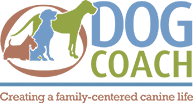Every dog will need grooming regardless of the breed and training is important to making that possible. Your goal is to start small, getting your puppy used to the motions and sensations of brushing, nail clipping, and even bathing. Through regular handling, slow desensitizing, and consistent effort, your dog will have an enjoyable grooming experience.
If you have a breed that will need to be professionally groomed (e.g. Doodle, Golden Retriever, Cocker Spaniel, Poodle, Bernese Mountain Dog, etc) getting your puppy prepared is vital. Groomers are in high demand with busy schedules and low tolerance for poorly behaved dogs. Start small at home, working up to a full grooming session. Be sure to plan and get on a groomer’s wait list before your dog needs to be groomed.
Patience and consistency are key in dog training, especially the slow desensitization process of grooming. Here’s how to get started.
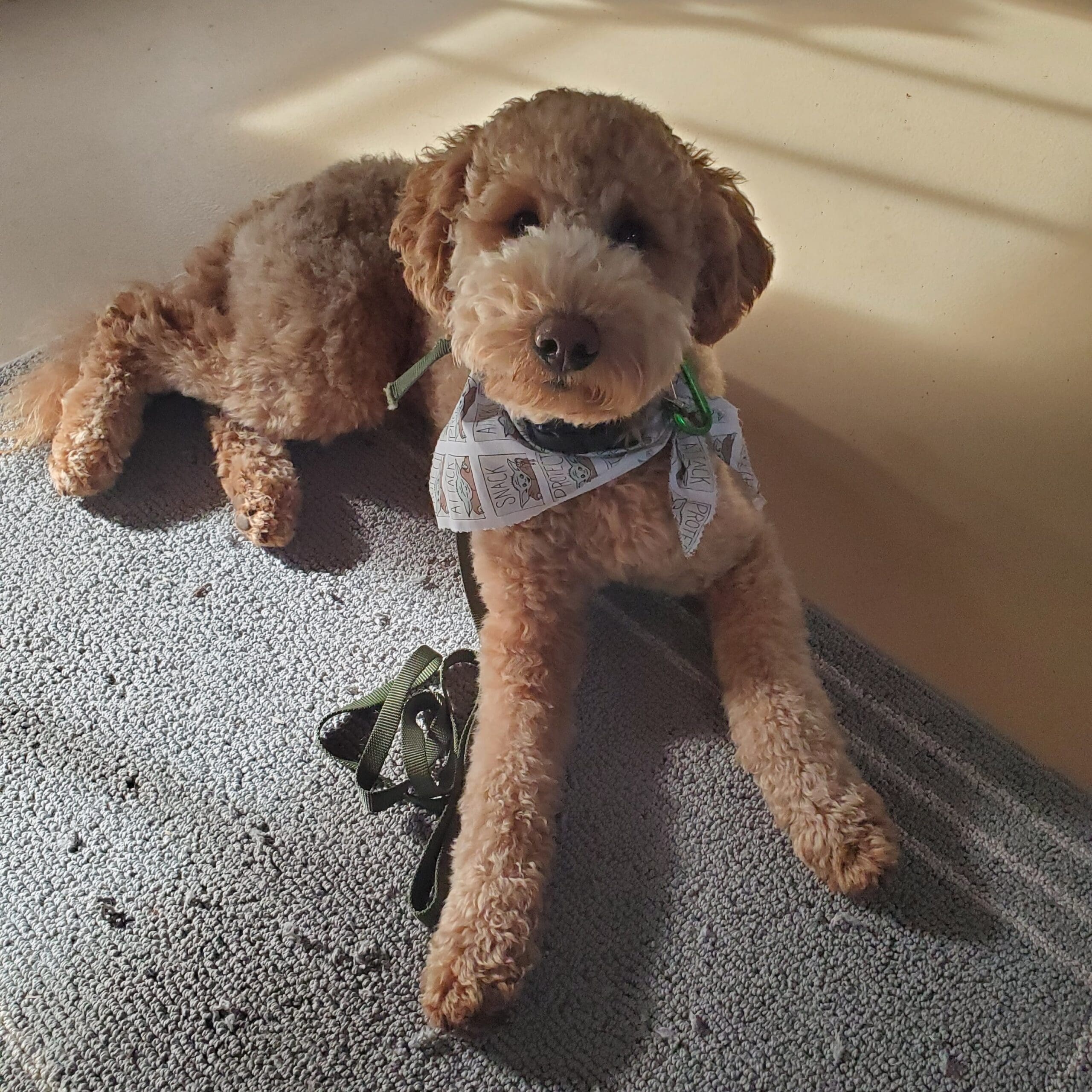
Puppy’s First Week Home
Some puppies will come from breeders who may have started the grooming desensitization process. That’s great, keep going. Other puppies may be brand new to you touching their paws and using a standard bristle brush. Your dog’s breed and coat may require another type of brush, comb, or rake, but start here or with an old toothbrush for extra small dogs. With the leash on, take 1-2 minutes each day, and inspect your puppy’s paws, ears, and mouth. You’re getting her used to being handled – both at the groomer and the vet.
With the leash on, take the brush, and gently brush your dog’s paws, ears, head, legs, and body, for 1-2 minutes, being gentle and working slowly. It’s a new sensation and your puppy may not care for it yet.
If your puppy “doesn’t like it” slow the process down even more. Be sure the leash is on, stand on the leash to free up a hand, and slowly brush one small area. Praise your pup and that’s the session for the day. You may need to be firm when “examining” your puppy, they’re squirmy and nippy. But getting them used to it now will be easier than wrangling a full-size dog at the vet or groomer later on.
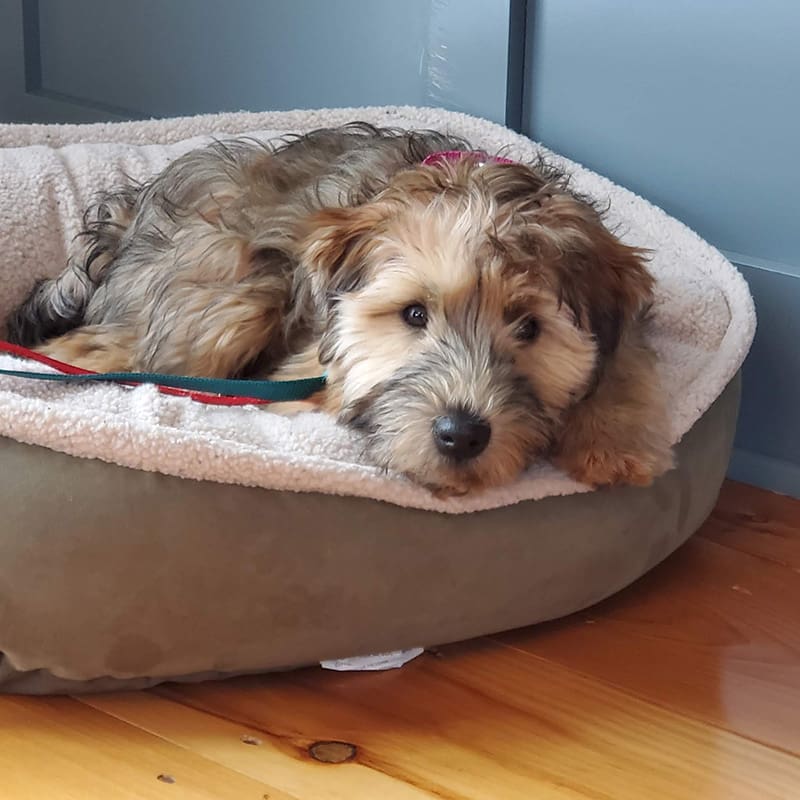
Puppy’s First Month Home
Keep increasing the time you spend on your puppy’s paws and body. Graduate from touching your puppy’s paws with a brush to using an electric toothbrush handle/base (turned off) on your puppy’s paws and body. After a few days of short daily sessions, turn on the electric toothbrush near your puppy for a few minutes to get them familiar with the sound of clippers. Don’t rush it and force it. A few days later, slowly move the toothbrush’s base to a paw. You’re simulating both clippers and a nail Dremel tool.
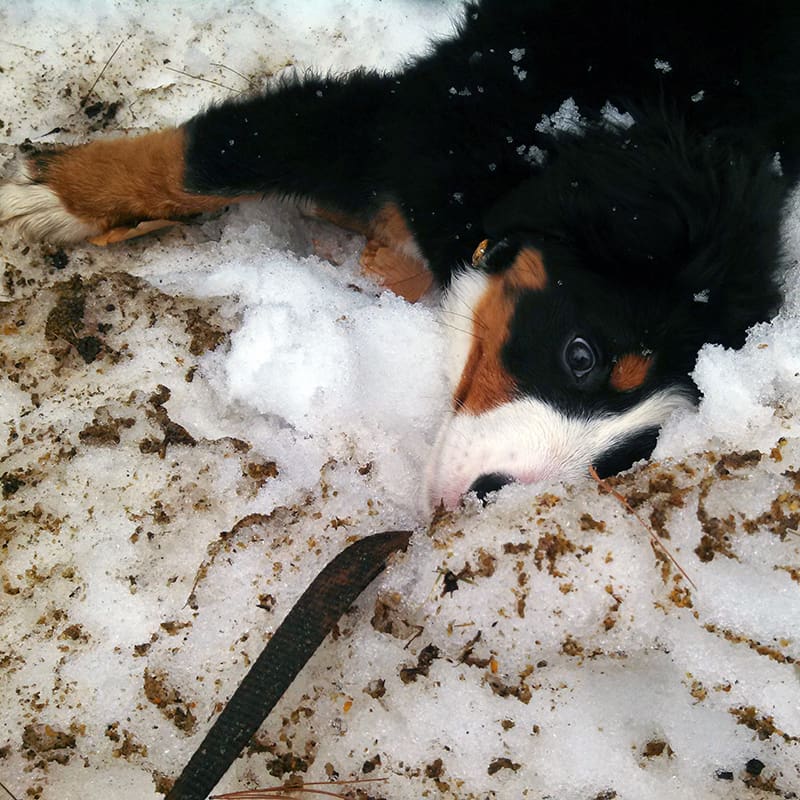
Before Puppy’s 6 Months Old
When your puppy is comfortable with a standard bristle dog brush, introduce other combs or rakes specific to their coat. Make sure your puppy is leashed and restrained before every session; you’re imitating a grooming table. A quick Google search will show you the types of tools appropriate to the breed’s coat.
If you haven’t already, start moving the electric toothbrush (or clippers if you have them) to different areas of your puppy’s body. Some areas may be more sensitive than others, go slow. Ideally, your puppy will let you use the electric toothbrush, while on, on her face. This is especially important for Poodles, Doodles, and small breeds like Maltese, Bischon, etc. for trimming around the face. Other breeds with beards (e.g. Spinone, terriers, Wolfhounds, Schnauzers, etc.) will also need facial grooming. You should be touching their faces regularly to desensitize them.
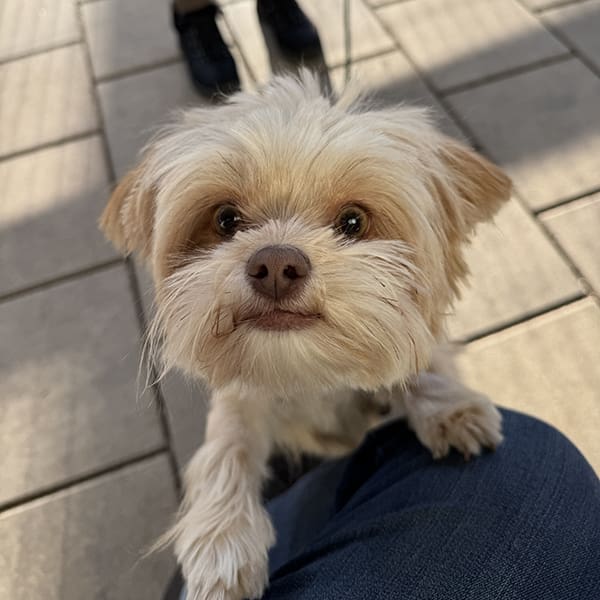
After 6 Months Old
Ideally, you’ve been able to desensitize your dog to being touched all over with hands and grooming tools. If you’re just starting out, you’ll want to repeat this same process. Make sure every time you go to have a grooming training session, the first thing you do is attach a leash. Using treats as a reward after a grooming session is fine, as long as your dog is not going crazy over the treats. Consider doing a session right before a meal or right before playtime; both can be used as rewards in addition to your hearty praise.
Keep training between professional sessions to better prepare your dog for their next visit with the groomer. Appreciate the secure, calm dog you’ve trained for a lifetime of grooming!
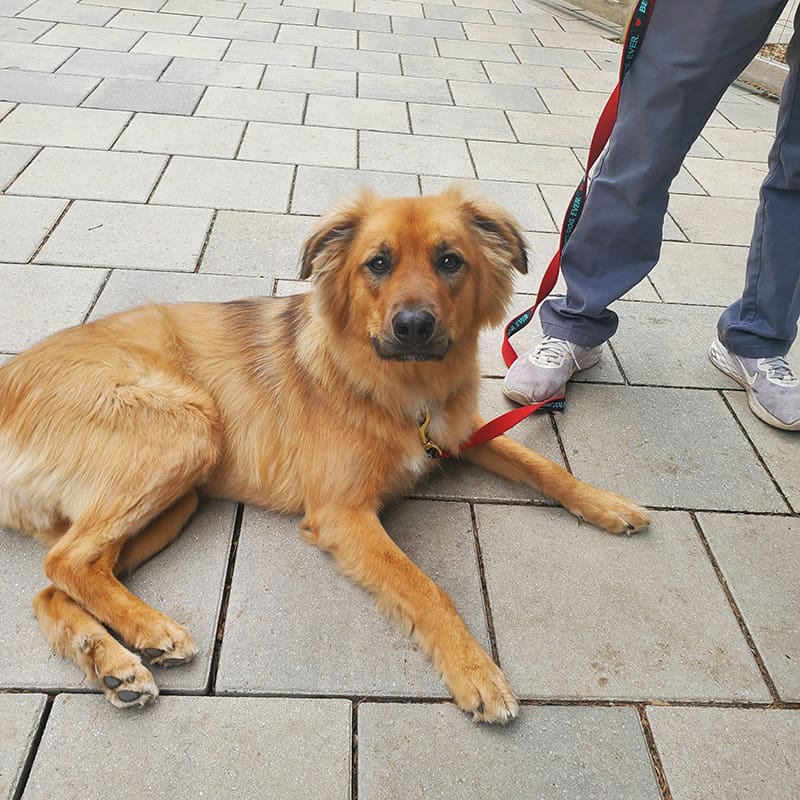
Now Offering Training in Somerville, Cambridge, Medford & Surrounding Area!
See the full list of areas served
Our In-Person Programs
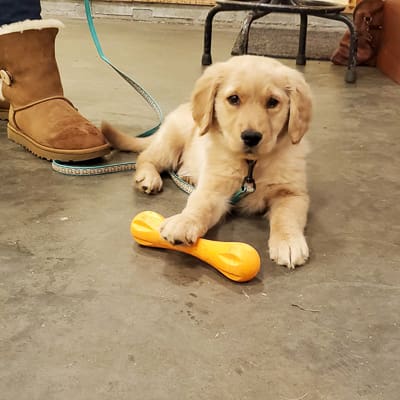
Team Puppy Training
Encourages your leadership and show how you to nurture good behavior.
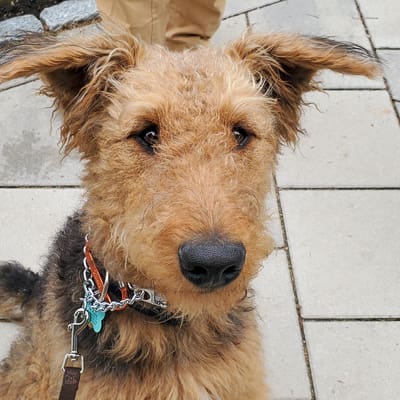
Foundation Training
Covers the basics of good dog behavior as well as some behavior modification.
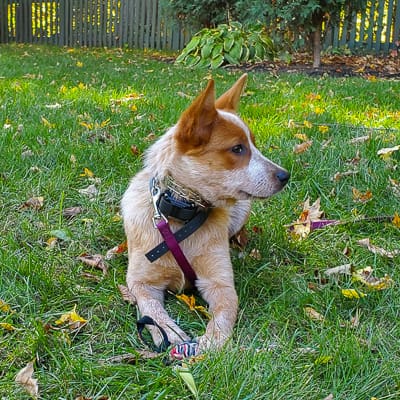
Remote Collar Training
Foundation Training with e-collar for total off-leash freedom and behavior modification.
What our clients have to say...
Dog Coach listened carefully and observed keenly my interaction and tone of voice with Bella. At nearly 6 months now, she is the best-trained dog I've had. It was a worthwhile experience!
We want to thank Dog Coach for your patience and encouragement! Our dogs are really coming into their own as the perfect family dogs we were looking for!
Such a great investment! We got a puppy and had a toddler... It was overwhelming at first. Working with Dog Coach has been the gift that keeps on giving.
